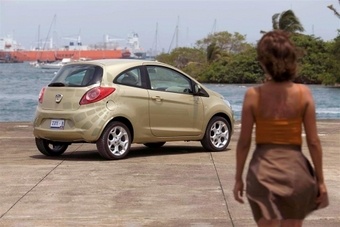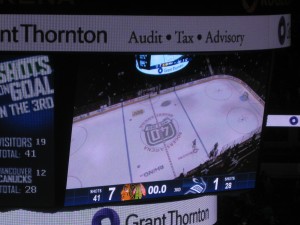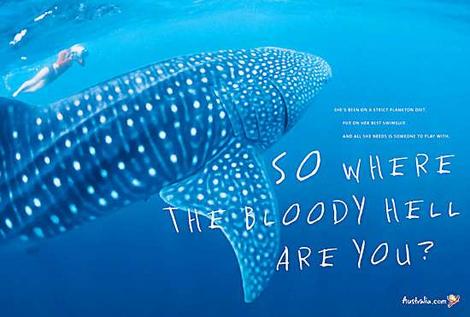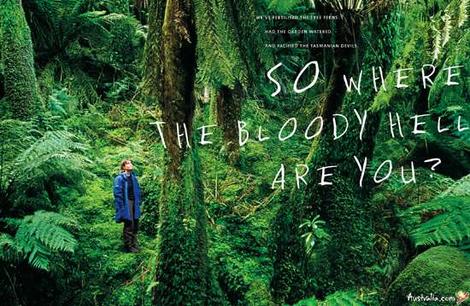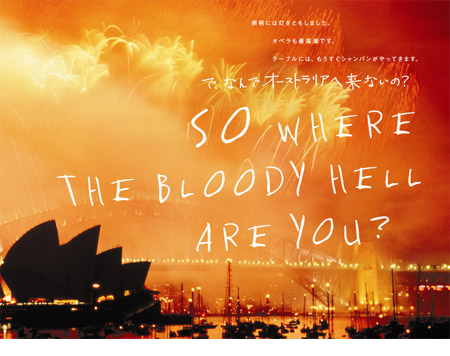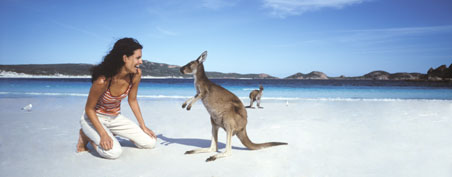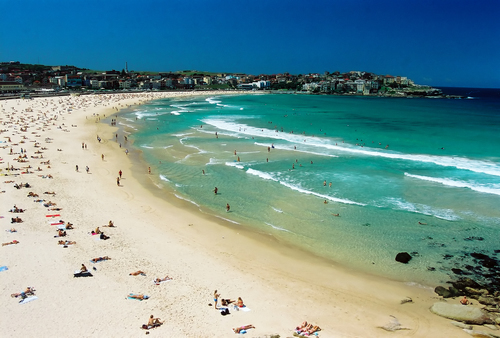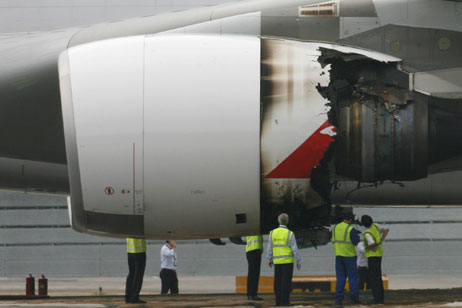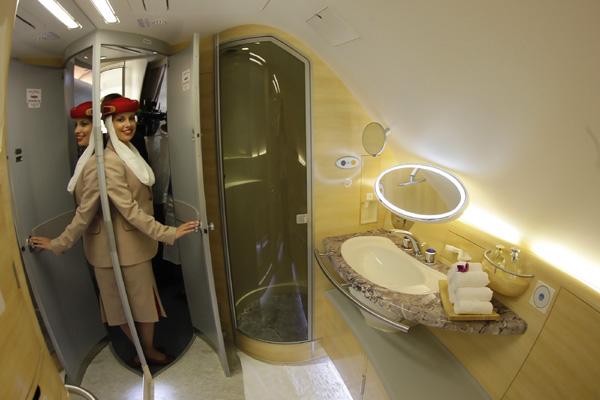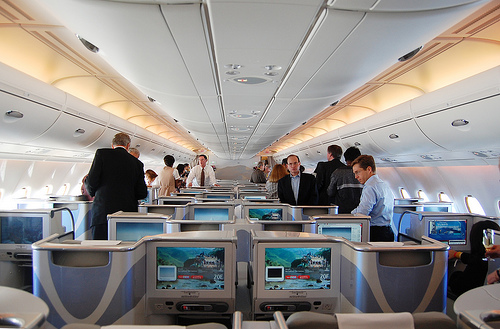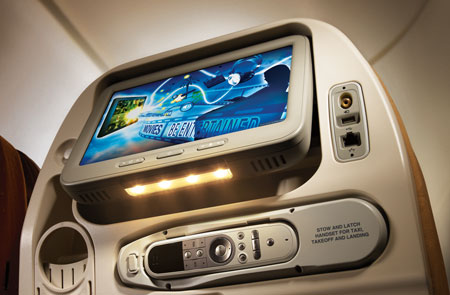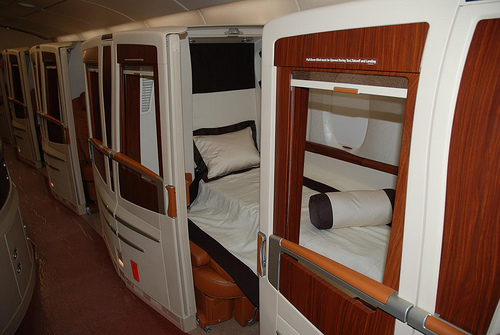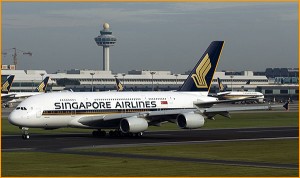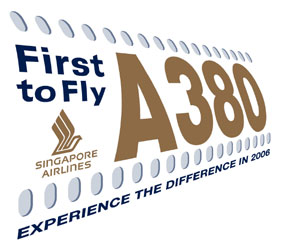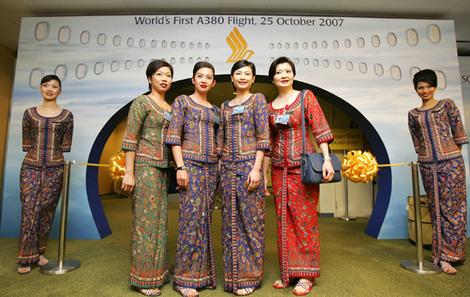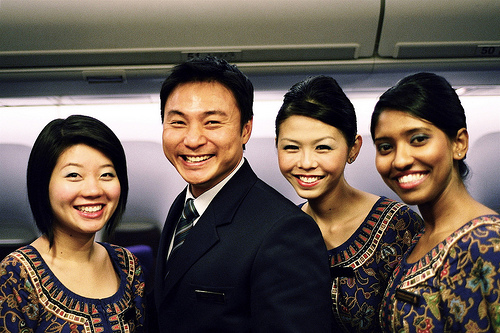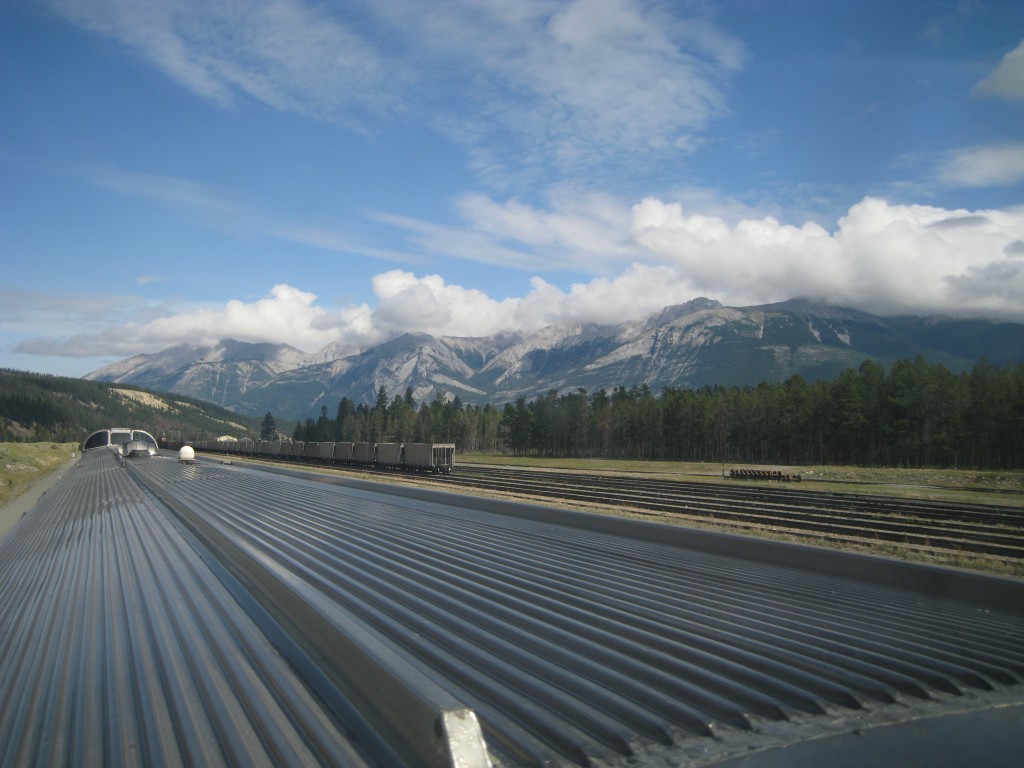Just like Keith Foong, when examples of product placement in movies were discussed in class, I was thinking about all the product placement strategies used in the last two James Bond movies.
The one which stuck in my mind the most was the scene when James Bond (Daniel Craig) first meets Vesper Lynd (Eva Green) on the train. Vesper asked Bond whether his watch was a Rolex to which he replied that it was in fact an Omega. Vesper then replied “beautiful”. Another one from that movie was the placement of Virgin Atlantic. As Bond was madly hanging onto a fuel truck speeding along the tarmac of the runway, a huge Virgin Atlantic B747 takes-off in the background. Smirnoff Vodka as well as Heineken also featured in Casino Royale (skip to the 4th minute of the video). In total, Ford, Heinekenn, Sony, Smirnoff Vodka, Sony Ericsson and Omega invested more than $100 million in product placement promotional strategies.

Similarly, the above brands have also featured in Quantum of Solace. Specifically, Bond’s sidekick, Camille Montes played by Olga Kurylenko, is seen driving the Ford Ka, which was poised to become the next hit in the small car market. All over the boot and bonnet of the car were Hydrogen Fuel Cell Electric logos to promote the environmentally-friendly hydrogen-powered car. The audience was practically whitewashed by the blatantly obvious placement of the Ford Ka. We also see Bond sipping a Coca Cola as well as driving an Aston Martin in the beginning car chase scene, which portrayed Bond as both a debonair yet emitting a very powerful and slightly threatening aura.
It is not surprising that so many brands would like to secure a place for their product in a James Bond film. Through Bond’s wide audience, many people would be exposed to the brands placed in the film. This increased exposure would either remind the audience of the product, or generate awareness and hopefully an interest and desire which would ultimately cause them to consume the product. This progression through the AIDA model could be facilitated by the coolness, ‘Britishness’, shaken-not-stirred, energy, style, mystery and for girls, the sex appeal which Bond conveys. These factors seem to outweigh the high expenses required to gain a place in a film such as those of the James Bond series.
Marketing Heaven
I just like to start by commenting on how AMAZING the snow is – it’s literally a sea of snow! Right now, I’m sitting next to the fireplace sipping a cup of hot coffee enjoying the snowfall whilst being soothed by the soft Christmas carols playing in the background.
Anyway, on Saturday night, I was lucky enough to attend the hockey game between the Vancouver Canucks and Chicago Blackhawks – it was a truly Canadian experience! The atmosphere was intense and filled with energy at least for the first period and half of the second period before the Blackhawks started to mercilessly shoot the puck into the hearts of the Canucks and all their fans.
Aside from the game itself and the Canuck’s disappointing performance, I was overwhelmed by the eclectism of marketing in the form of advertising and sponsorships. Even before I walked into the stadium, the name of it, “Rogers Arena”, which was posted on my ticket/souvenir, was turning on my marketing drive. I later discovered that Rogers Communications struck a multi-million dollar 10 year deal with the Canucks giving Rogers naming rights for the Canuck’s home stadium. Add the Rogers name to every banner, program, Canucks website and sign, then this adds up to maximum brand exposure for Rogers, but this was only possible because of the Canucks’ and Rogers’ healthy brand equity. Because hockey is such an undeniably prominent and important element of the Canadian culture and because the Canucks, in particular, are so widely recognised throughout the whole of Canada and so deeply ingrained into the minds of most British Columbia residents, it is no surprise that Rogers wanted to partner with the Canucks in order to signal to its competitors in the Pacific Canadian telecommunications market (e.g. Telus) that it is a serious contendor.
Back to the game…as soon I walked into the stadium, my marketing drive was going into overdrive. In the common areas outside of the rink, Playstation was allowing hockey fans to try out its new fitness game or some product of that sort (I dislike video games). There were advertisements everywhere – Miller beer, Häagen-Dazs and Canucks souvenirs (jerseys, scrafs, gloves, soft toys, cups etc.). In the seating areas around the ice-rink, it was marketing heaven. A 360 degree LED screen traced around the whole ice-rink featuring advertisements for absolutely everything: Save on foods, HSBC Bank, Air Canada’s non-stop flights to Asia, SportChek, The Keg, Tim Hortons, CocaCola, Snickers, Boston Pizza etc. The scoreboard positioned above the centre of the ice-rink was also a powerhouse of promotions.
Underneath the ice in the ice-rink were Best Buy logos; around the barriers of the ice-rink were promotions for Rogers, CocaCola Zero, HSBC Bank, REMAX, Spence Diamonds, Molson Canada etc. Even the ice-rink resurfacer carried the MasterCard logo.
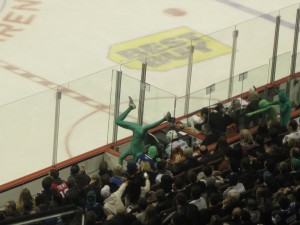
The popularity of the Canucks and NHL makes them highly attractive for sponsorships by a plethora of different companies and as a base for promotions. The popularity of hockey in Canada has united “all ages, cultures and races”, which can be used to the benefit of many companies as it allows for the widespread delivery of a company’s promotional message. This is especially the case given that hockey ticket sales are consistently high; the games are aired on several television channels and newspapers; and that the Canucks.com website receives 12 million page views/month, which are over 10 minutes long.
Despite the humiliating loss to the Canucks, I really enjoyed the game! I certainly have no postpurchase dissonance, even though the tickets were incredibly expensive. I valued the unique insight into the Canadian culture the game offered. Now, it’s time to further that by going out to take some photos of the snow!!
Larceny
This isn’t going to be a marketing post per se; I just really need to vent my spleen and I need to do it through a blogpost filled with rage, but I’ll try and link in some marketing principles.
So last night, I was at the Pit Pub and I was having a very enjoyable time, until I discovered that my blazer was taken. My blazer which was at the back of my chair had disappeared – I only left it on my chair for about 10 minutes when I went to buy some drinks at the bar. I was really angry and I’m still very, very angry. I just went to the Pit to see whether that person who took it returned it back, but it was not there.
The main reason why my blood is boiling so ferociously is because no matter what I do, nothing can replace that jacket. It was a $400 Calvin Klein jacket that I purchased in Tokyo; only 300 of those jackets were manufactured. I really valued its rarity, brand, quality and design. No other jacket, even if it was a $500, $700 or even a $1000 jacket, can lament my fury.
I am hoping that it was a bona fide mistake on the part of the current possessor of my jacket and that he/she will return it back as soon as possible. If he does not, then – according to Australian (common) law – he/she has committed a criminal offence of larceny because he/she has satisfied the mens rea (mental element) for the offence – the mens rea being: (i) an intention to permanently deprive me of my jacket; (ii) taking my jacket without any claim of right; and (iii) taking it fraudulently/dishonestly.
If this is really the case, then I find it disappointing and abhorrent that someone can even form the intention of gaining possession of another’s property. And as a current law student who wishes to become a prosecutor in the future, I would have no hesitation in enforcing the law against this possible offender by bringing him/her to the court for prosecution (if I was a prosecutor).
Anyway, I’ll give this person the benefit of a doubt by believing that he/she mistakened my jacket as his/hers and that my jacket would be returned to the Pit Pub by the end of this week.
I was reading through Stacey Barry’s blog on Tourism Australia’s 2006 campaign blunder (see commercial here), which depicted various attractions in Australia such as the Great Barrier Reef, the Sydney Harbour Bridge and views of rural Australia. It was a marketing campaign designed to boost Australia’s international tourism industry, but it all went horribly wrong because of two words, “bloody hell” in the campaign’s tag-line, “So where the bloody hell are you?”.
So what the bloody hell went wrong?
Like Stacey, I’m an Australian myself and I concur with her statement that the tag-line “was a bit over exaggerated and extreme”. However, unlike her, I am not of the opinion that the phrase, “bloody hell” is not one commonly used in Australia’s general population. To be honest, I personally do not say “bloody hell” very often at all but it would be erroneous to say that it is not a phrase used commonly by quite a large proportion of the Australian population in casual, informal settings. I can imagine it being said more often amongst the rural communities, which are generally more what many non-Australians think of a typical Australian – ocker-accented larrikin such as Paul Hogan (the “Crocodile Hunter”) and the late Steve Irwin. To me, “bloody hell” has become somewhat assimilated to the Australian culture and to deny such a fact would be similar to denying the atrocities of the Holocaust.
However, I can understand how some cultures, particularly the more conservative ones, can decode the phrase in the sender’s message as something other than a friendly, innocent tongue-in-cheek phrase. I can imagine the “English English”, the ladies, the gentlemen and the conservatives in the United Kingdom being slightly offended by the tag-line, which is why it wasn’t surprising that the UK banned the advertisement. Similarly, Singapore changed the tag-line to “So where are you?”, which doesn’t seem to quite carry the same punch to it. Therefore, in agreement with Stacey, Tourism Australia could have toned down the tag-line so as to prevent misinterpretation.

In spite of this, this controversy generated great publicity for the promotional campaign. I guess any publicity is good publicity but in this case, I think it worked against Australia because tourist numbers actually dropped.
Flying into Turbulence
This is just going to be a quick blog post on a marketing point which crossed my mind whilst reading this article on the recent engine explosion on a Qantas aircraft several minutes after it departed from Singapore. Its disintegration ripped a hole in the wing, destroying wiring that prevented the pilots from switching off the adjacent engine and causing a fuel leak. The hydraulic systems were damaged preventing the spoilers from deploying to deccelerate the plane.
Touching down back at Singapore Changi Airport was nothing short of a miracle.
Qantas and Singapore Airlines have grounded 6 and 3 of its A380s respectively. Preliminary investigations have uncovered oil leaks on the engines which have required replacement of the Rolls-Royce Group Trent 900 engines. Qantas anticipates that it may ground its A380s for several weeks, which would be detrimental for its lucrative summer holiday period (Summer in the Southern Hemisphere starts in December). Lufthansa has also replaced the engines on its A380.
But the marketing issue here is the effect that Qantas’ mid-flight emergency has on all other airlines operating the A380. A negative attitude has been generated – there is fear and concern of the safety of the A380s (affective component) as consumers believe that all A380 engines may be flawed by oil leakage, especially when several airlines have discovered this problem (cognitive component). The issuance of an Emergency Airworthiness Directive by the European Aviation Safety Agency has recommended “repetitive inspections of the Low Pressure Turbine…in order to detect any abnormal oil leakage, and if any discrepancy is found, to prohibit further engine operation” – this also has added to the belief that the A380 may not be safe. It is feared that this negative attitude would result in consumers not choosing to fly the A380 on any airline (behavioural component).
This certainly is a problem which Emirates is trying to avoid. Emirates is concerned that Qantas’ A380 issues would tarnish the reputation and safety of all A380s in general via the “contagion effect” as Emirates President, Tim Clark, states. As the airline with the largest order for the A380s (90 orders), it is imperative for Emirates to ensure that consumers continue to fly its A380s to prevent the risk of massive losses due to reduced passenger numbers.
So what has Emirates done to address this problem and what could it do? Well Emirates has already tried to change the belief of consumers (cognitive component). Emirates has differentiated all of its 14 operating A380s from the other affected A380s by claiming that Emirates uses General Electric and Pratt & Whitney engines and not Rolls-Royce Group Trent 900 engines on its A380s. However, I’m not certain whether this message was released in official press releases etc., but Emirates could reinforce its differentiated product through promotion strategies. Furthermore, Emirates could target the affective component by focussing and promoting on the other aspects of its A380s, such as the suites, inflight showers, onboard lounges, exceptional service, and its safety records, so that the consumers fall in love with the product again. In this, way they may not feel as concerned with the safety of the A380s. Through these strategies, then Emirates may prevent losing (too many) consumers from flying on its A380s (i.e. generate a positive attitude that would positively influence their behaviour).
The brand, Singapore Airlines, resonates with luxury, comfort, extraordinary service and the quintessential Singapore Girl. It is the standard for all other international airlines and I believe this to be true. Having flown Singapore Airlines more than 30 times in my life between Singapore and Sydney, Tokyo, Seoul, Jakarta, Bangkok, Kota Kinabalu, Hong Kong, Kuala Lumpur and Bali, Singapore Airlines has never failed to impress me. Its healthy brand equity has really added value to Singapore Airlines and has arisen from the marketing strategies it has adopted.
The Singapore Airlines brand is widely recognised by most people around the world. It has good brand awareness. Singapore Airlines frequently communicates the value of its product through print media, television commercials, sponsorships (such as Sydney’s City2Surf race, the Singapore Youth Olympics Games and the Giant Panda Collaborative Programme) and publicity. It adopts the tag-line, “Singapore Airlines – A Great Way to Fly”, in all its promotions to convey the quality of the Singapore Airlines brand. It also occasionally uses “A standard of service that even other airlines talk about”.
For example, Singapore Airlines has generated much brand awareness and increased the perceived value of its products and services through its experimentation of new services from the time of its inception in 1972. It was the first to introduce hot towels, hot gourmet meals, video-on-demand, and complimentary beverages and headsets. It was the first to introduce the inflight telephone services with its KrisFone in the 1990s. It was also the first, in 1998, to introduce a panel of internationally-renowned chefs such as Matthew Moran and Gordon Ramsay to develop inflight meals. It was also the first to provide inflight email services, email check-in and text message flight alerts.
I specifically remember watching movies and playing Nintendo games on the in-seat televisions of Singapore Airlines aircrafts around 2000. I also remember receiving the colouring books and model planes when I was younger. Since then, that entertainment system (which now features a plethora of recent movies, documentaries, TV series, games, weather, news etc.) has become so advanced that it is now a feature which Singapore Airlines uses to differentiate itself from its competitors – it’s almost a like whole new product line, Krisworld. The suites on its A380s which have set a new standard of inflight luxury, space and comfort, the revamped business class with the widest leather seats and large LCD television screens are all features that have increased the perceived value of the Singapore Airlines brand. Very recently, Singapore Airlines was the first to introduce all business class flights between Singapore and New York/Los Angeles on its A340-500. Through innovation, Singapore Airlines has achieved quality customer service.
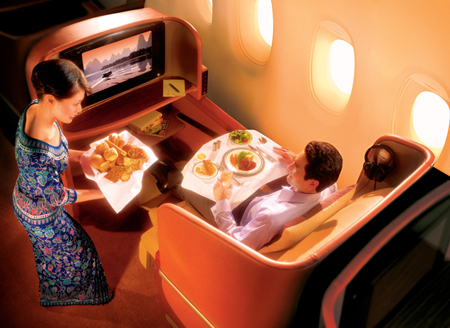
Singapore Airlines is also heavily increasing its brand awareness and increasing the perceived value of its brand through being the first to use new aircrafts. It was the first to fly the new Airbus A380 in 2007. This certainly was a marketing tool which Singapore Airlines used to increase its brand equity. I recall being in Singapore and seeing billboards and signs at the airport, along Orchard Road, magazines and on television promoting Singapore Airlines as being the “first to fly A380”. It even extended to the napkins and cards which I received on the plane – it was everywhere! Singapore Airlines was also one of the first to fly the Boeing 747 and Boeing 777. It went so far as to name sub-brand its aircraft – 747-Megatop and 777-Jubilee to further differentiate itself from its competitors.
Singapore Airlines also has one of the youngest fleet of aircrafts in the world (average age of each plane is 74 months compared to 160 months for other airlines). The constant investment in new aircrafts such as the larger, quieter first double-decker A380 and the more fuel-efficient B787 (Dreamliner) has allowed to save on costs such as fuel (15-20%) and maintenance, placing it in a sustainable competitive advantage. Its airlines spend less time in the hangar allowing them to spend more time in the air (13 hours per day compared to an industry average of 11.3 hours) and thus generate more revenue. The cost per available seat kilometre is just 4.58 cents compared to other airlines which range from 5-16 cents. Singapore Airlines also has little debt and has never posted an annual loss, which are strengths of the company.
Singapore Airlines has even developed a personality for its brand through the Singapore Girl, which is at the heart of its all advertising and its product – it is now a trademark and brand for Singapore Airlines. The iconic Malay sarong kebaya (that can be blue, green, red or burgundy depending on the rank) encapsulates the Asian hospitality and for me is associated with the luxury, quality and comfort of Singapore Airlines. Whenever I board a Singapore Airlines flight, it is guaranteed that I will be greeted almost incessantly with warm smiles by the well-dressed, elegant, courteous Singapore Girls with their hair tied neatly in a bun or in French Twists, their nails painted red and their eye shadows painted blue to match their uniforms. The attention to detail is just amazing – all flight attendants must bring a spare kebaya for all flights in case of spillage, tear etc. This attention to detail is lacking in all almost all other airlines I have flown, particularly the non-Asian airlines – they stand on the side without helping passengers stow the luggage, do not greet passengers, some look out of shape, wear ugly uniforms and just have a range of messy, inconsistent hairstyles. However, the cabin crew of many Asian airlines such as Malaysia Airlines, Cathay Pacific, Japan Airlines and Asiana Airlines are also very attentive to detail.
Singapore Airlines’ exceptional inflight service is rooted in its vigorous training of cabin crews for four months, which is double the industry average. The prestige of the job helps build up the Singapore Airlines brand. Potential cabin crew are chosen from China, Taiwan, Indonesia, Hong Kong, Singapore, India, Japan, Malaysia and South Korea so that language barriers are minimised. They are interviewed and only 20% pass through to the training stage which includes deportment, wine appreciation and etiquette courses. Once they graduate from the ‘finishing school’, their performance inflight is reviewed by an inflight-supervisor for 6 months. All cabin crew undergo further training annually. It is no surprise therefore that Singapore Airlines won the 2010 World’s Best Cabin Staff Award (Skytrax).
Another factor feeding into Singapore Airline’s healthy brand equity is its large proportion of brand loyal consumers. It has the Krisflyer program which rewards passengers for flying on Singapore Airlines and its Star Alliance partners, spending on partnered credit cards and hotels with miles that can be redeemed for flights and vouchers. Higher-tiered Krisflyer members can also enjoy priority check-in, boarding, baggage handling, extra check-in baggage allowance, and complimentary access to first class lounges and even Star Alliance lounges. Singapore Airlines is receptive to all consumer feedback and constantly strives to satisfy its passengers. For example, when my flight to Singapore to Seoul was delayed due to oil leakage at the back of the aircraft which caused a complete power shortage (no lights, no power to the engines, no air-conditioning), each passenger was compensated with $300 cash, $50 in meal vouchers at the airport and accommodation as the flight was an 11:45pm flight. Singapore Airlines, in effect, was trying to minimise the post-purchase dissonance. (We were lucky to be on the ground when this happened – who knows what would have happened if this occurred in the sky?!)
Overall, Singapore Airlines’ success has been partly driven by its robust brand equity. Its pursuit of excellence, customer-oriented decisions, innovation in service and technology, and value for its staff has helped differentiate it from its competitors. Whenever I fly Singapore Airlines, I expect an unprecedented level of service. I patronise Singapore Airlines because of its consistent yet ever-improving service, its smooth flight connections, reputation, almost impeccable safety, and price which accurately reflects the value of its service.
Essentially, my trust is in the Singapore Airlines brand – it is seriously a great way to fly.
All information has been sourced from:
http://www.freeonlineresearchpapers.com/insider-singapore-international-airlines-success-secret
http://www.worldairlineawards.com/Awards-2010/cabinstaff2010.htm
http://www.brandchannel.com/features_profile.asp?pr_id=209
http://www.apmforum.com/strategy/siabranding.pdf
http://www.capacityisdevelopment.org/doccs/capdev_casestudy/Singapore%20Study.pdf
http://www2.warwick.ac.uk/fac/soc/wbs/subjects/om/teaching/service/sia06.pdf
Measles Vaccination
I want to share this advertisement by the “Measles Initiative”, which focuses on vaccinating people against the virus, measles. I was shown this video at the very beginning of my Virology class last Friday (once in the link, watch “The Last Measles” video) and somewhat surprisingly, some marketing ideas popped into my mind.
Just some background information on measles. Measles is an infection caused by the Rhabdo family of viruses. It is easily spread by aerosol (coughing/sneezing) transmission and through direct and indirect contact (e.g. touching a doorknob with the virus). When infected, it causes the archetypal symptoms of an infection – fever, headache, cough but it also causes a nasty skin rash that usually commences in the neck region (I would include picture of this but the photos may be a bit too graphic for some). For most patients, these are the only symptoms but for about 20-30%, secondary infections such as diarrhoea, pneumonia, blindness and encephalitis (inflammation of the brain) occurs due to the suppression of the immune system by the measles virus (specifically, much like the HIV virus, measles inactivates the T cells, which is critical immune defence mechanism against viruses). It is because of these secondary complications that death usually ensues, especially amongst children living in developing nations as they are usually living in poverty, are malnourished and have little access to the scarce medical facilities. In developed nations, these patients usually survive because of hospitalisation. In very rare cases, the measles virus can enter the central nervous system causing Subacute sclerosing panencephalitis (SSPE), which has a 100% mortality rate. Currently, 450 people die each day from measles-related complications. The risk of this also exists in developed nations – in fact, 14 unvaccinated people in the Vancouver area were infected with measles earlier this year.
Anyway, so how does this have to relate to marketing, you may ask? Well, in my opinion, it most certainly relates to marketing. Marketing is necessary to convey the message of the measles problem and the solutions to it, which is what the advertisement above was aiming to do. Through the narration of a young measles survivor from Africa, we gain a first-hand experience of the heartache, pain, terror and fear the measles virus sparked in his family, school and village. He informs the audience of the “miracle” – the vaccine which eliminated the virus in his village but fears for nearby towns that have not received the vaccine. The advertisement concludes with statistics and how we can help by donating money so that vaccinations can continue. Without such advertisements, people would not be aware of the measles problem and would not be aware of the contributions which they can make to solve this problem.
I was emotionally appealed (pathos) by the advertisement. It generated fear, worry and sadness for these communities. Certainly, the sombre tone of the advertisement was augmented by the narrator’s innonence, and the black and white colour tones, which contrasted with the red spots, symbolic of the measles virus. Personally, for me, I perceived the red spots as danger and so I believed that this was a good technique. All of these features really generated interest in me and helped capture the audience’s attention such that Measles Initiative’s message could be conveyed. Subsequently, I gained a desire to donate to the foundation and I plan to take action within the next few days. In fact, the whole class was moved by the advertisement because the lecture hall suddenly fell silent upon hearing the first few seconds of the advertisement.
I hope that the advertisement has also made its mark on you and has expanded your understanding of the dangers of some viruses, which we may personally never see in our lives, but are rife amongst unvaccinated populations. I hope that it is not too much longer before measles (and polio) becomes eradicated in the same way smallpox has, made possible after the introduction of the Salk and Sabin vaccines.
Don’t Fall through the Gap, GAP!
I was reading Simon McEvoy’s marketing blog relating to Gap’s recent embarrassing blunder when Gap’s attempted re-branding of its logo was met with strong criticism and disapproval from Gap’s customers .
For those of you who don’t know what I’m talking about…earlier this month, Gap changed its logo on its website from the identifiable white letters in a plain blue box to one where a small blue box edges off the top right hard corner of the lower-case black letters spelling Gap.
Like the thousands of customers who vented their spleen on Gap’s website and social media websites such as Facebook, I feel that the new logo lacks innovation and creativity. It fails to ingrain itself in my brain. Instead, it leaves a painful indentation, marked by a sense repulsion and displeasure…and I have science to back me up here too!
A neuroscience study investigating the reasons why customers were so hostile with the branding was released just last week. It found that the “new logo failed to resonate with consumers on key metrics like attention, emotional engagement and memory retention” (http://www.marketingmag.com.au/news/view/neuroscience-study-analyses-gap-logo-disaster-2468). The researchers concluded that the logo lacked novelty and also violated several neurological best practises:
- The superimposition of the ‘p’ with the blue square results in the brain ignoring the word in favour of the image, which is problematic when the word is the brand name.
- The font is ordinary and thus does not appeal to the subconscious.
- Lack of contrast between the ‘p’ and the blue box also means that the brain is less likely to register the letter.
- As part of the evolutionary process, brains are tuned to avoid sharp edges. Therefore, the sharp edges of the box provoke an ‘avoidance response’ which deters us from the logo.
However, I think that Gap has prevented this blunder from turning into a catastrophic calamity. As Simon McEvoy comments, instead of investing time, resources and money on introducing and changing the logo in its stores, its advertisements and on its products, Gap wisely inserted the new logo onto its website only. In this way, it could test customers’ reactions and opinions – I like to think of it as something similar to exploratory market research.
Secondly, Gap allowed its customers to submit their own designs. I like to think of this as value co-creation, which is a technique many value-based firms use nowadays to increase the value of its product/service and to build relationships with its customers.
Thirdly (and probably the best of all), Gap decided to scrap its new logo completely. With the bombardment of condemnation and disapproval, Gap did what all value-based firms would do; it listened to their needs and satisfied them by recalling the new logo. In actual fact, for such a large company to admit guilt and concede defeat is one damn daring, courageous act, which is testament to Gap placing its customers at the forefront of its decisions. This decision was announced on the social media platform, Facebook.
However, some question the legitimacy of the mistake such as Grant Davidson of Davidson Branding who believes it to be a marketing stunt. He claims that it was a clever way of making customers realise and recognise their loyalty to Gap, which would in turn tighten their link to the brand…not a bad way of creating customer loyalty, eh?
We must keep in mind, however, that Gap did dip its feet into a very unreceptive crowd but to the extent that, in doing so, it hurt its branding and image, I think Gap came out better. Why? Because at the end of day, Gap’s quick, strategic response to customers’ complaints really demonstrates that it is willing to listen to its customers, which is proof that customers are at the core of its values.
I’m not going to lie…but I’ve been eager to write several blogs in the last week on a few interesting marketing topics but I haven’t because of several reasons: (i) I’ve been really sick with the flu; and (ii) even with the flu, I’ve been studying for 2 mid-terms, but since completing the marketing mid-term just less than a hour ago, I’ve been stuck on the marketing gear.
Earlier today, I read this interesting article on the travel experiences of a journalist on the VIA Train. This reminded me of my 3 night Toronto-Vancouver trip on ‘The Canadian’ VIA Train in late August (I actually broke up my trip into different segments (Toronto-Winnipeg; Winnipeg-Jasper and Jasper-Vancouver) so I stayed 2 nights each in Winnipeg and Jasper).
As I said earlier, since I’ve been shifted to a marketing gear for the whole day, I was relating my VIA experience to Maslow’s Hierarchy of Needs. To be precise, I was thinking how VIA satisfied all my needs. So let me begin…..
PHYSIOLOGICAL NEEDS – I travelled on Sleepers Class (like the journalist) and so my private cabin contained a bathroom, equipped with a shower, and a comfortable bed. It was my shelter, it was my home for the 3 nights I slept on the train. On the train, there was a cafe that served coffee/tea, sandwiches, soups etc. and there was a really good restaurant on-board that served breakfast, lunch and dinner. The food in the restaurant was impeccable. So my shelter, food and water needs were satisfied.
SAFETY NEEDS – For the whole journey, I felt secure on the train. There were train guards who patrolled the carriages and supervised the boarding of passengers. There were safety windows and emergency exits. Safety and evacuation procedures were announced. At no time on the train did I fear for the security of my body and my belongings. Now thinking back on it, maybe I shouldn’t have just left my backpack and belongings on the seat of the dome carriages!
LOVE AND BELONGING NEEDS – As the journalist commented in his review, I was able to have lively, meaningful conversations with the other passengers. I recall meeting several other UBC students who were making their way back to UBC, an Oxford student whose English accent was unbelievably posh, a couple from Canberra (the capital of Australia), an old Indian couple from Missisauga, Ontario, and numerous other people. My friend and I had dinner with a UBC student and the Oxford student on one of the nights. I developed friendships here and felt a sense of belonging.
ESTEEM NEEDS – To be honest, I felt happy that I traversed Canada from east to west on rail. To me, VIA Rail was positioned as a luxury form of transportation. Having learnt that the majority of locals have never travelled on VIA, I was proud to say that I have (but I guess VIA is a more ‘touristy’ thing to do).
SELF-ACTUALISATION NEEDS – Travelling through the marshlands, swamps and meadows of Eastern Canada, through the yellow, endlessly flat plains of the Priaries, and through the majestic, picturesque valleys, trees, and turquoise lakes and rivers of the Rockies really compelled me to reflect on the sheer beauty of Canada’s landscape. I also had lots of time to myself – I was able to reflect upon my travels in the 2 weeks prior to the train journey (New York, Washington DC, Boston, Niagara Falls, Quebec City, Montreal, Toronto and Ottawa) and my life away from home, as I came closer and closer to my new home in Vancouver. It’s amazing how much thinking, reflecting, reminiscing and contemplating one does when there’s free time, impressive scenery and comfortable seats in dome carriages!
So to sum up, I think VIA Rail has effectively targeted all of my needs. In my eyes, this has certainly added value to the service. Although I paid a lot for the ticket, I believe that I received great value in exchange – the service, unique experience, scenery, comfort, food (the list just goes on) certainly took me by surprise and I was impressed! I highly recommend VIA Rail.
P.S. I’ve heard that they have last minute specials (tickets sold 3-4 weeks before departure); there are heavy discounts of up to 80%!
